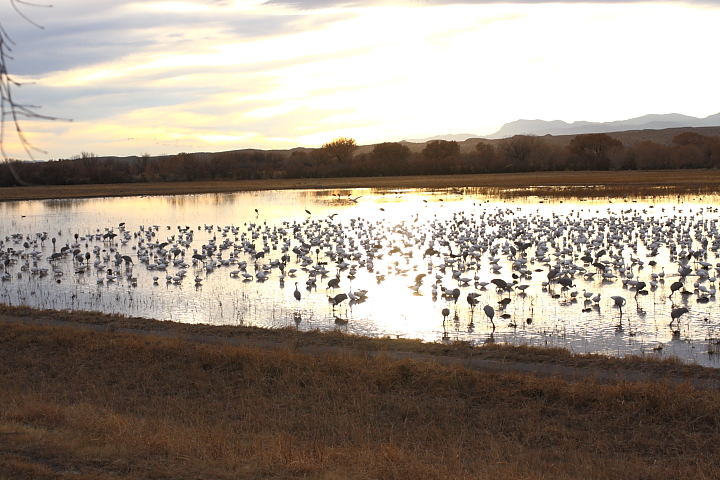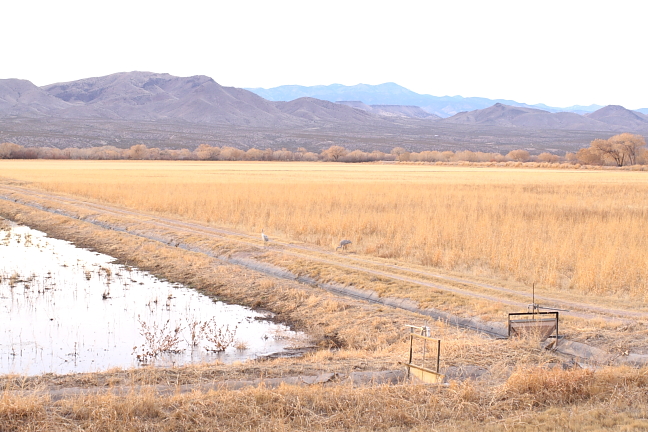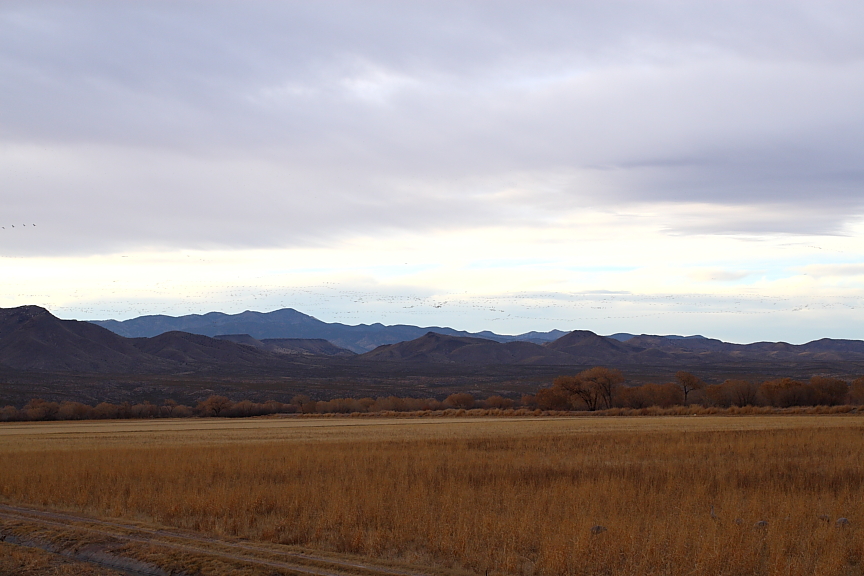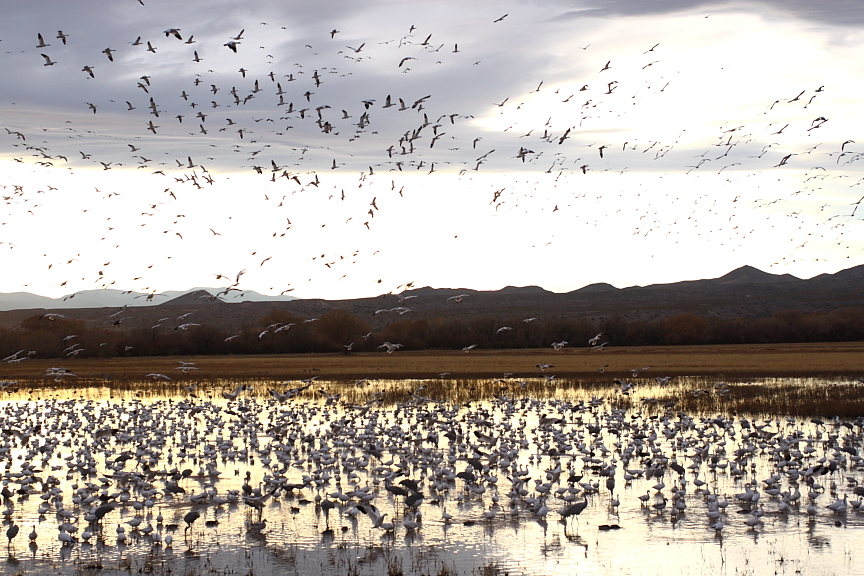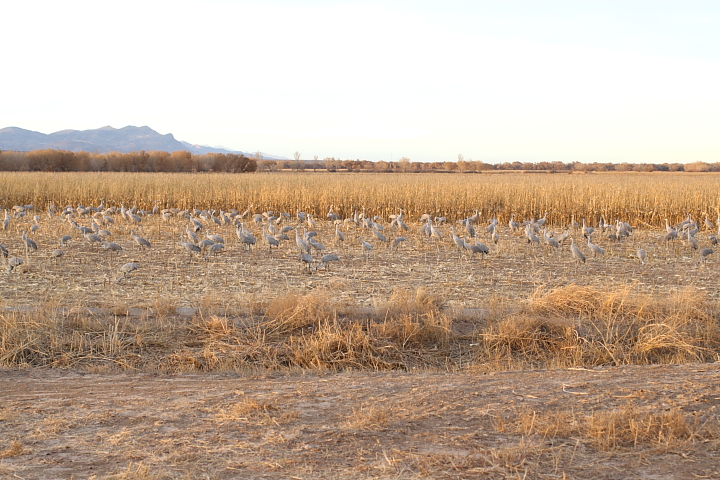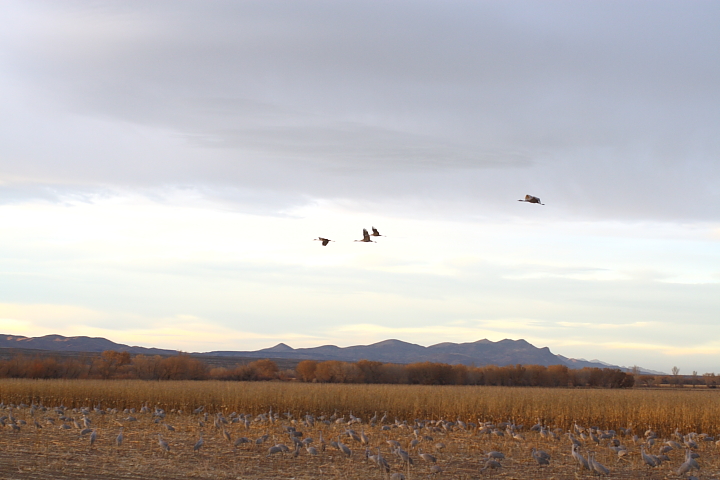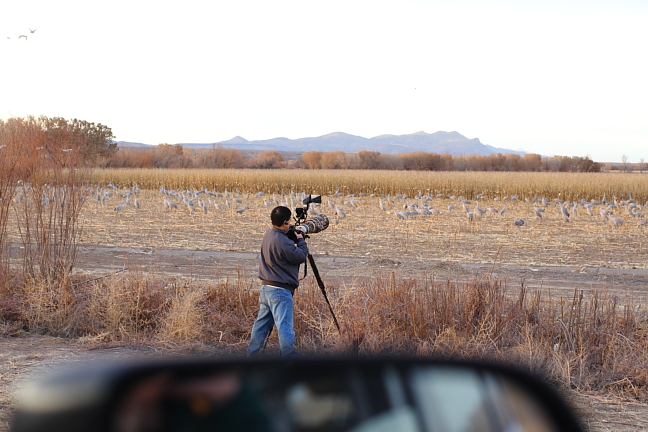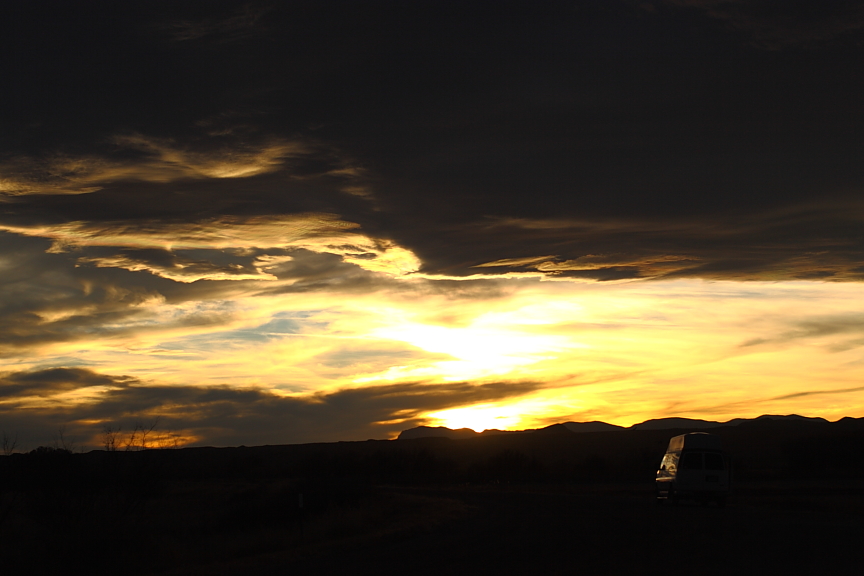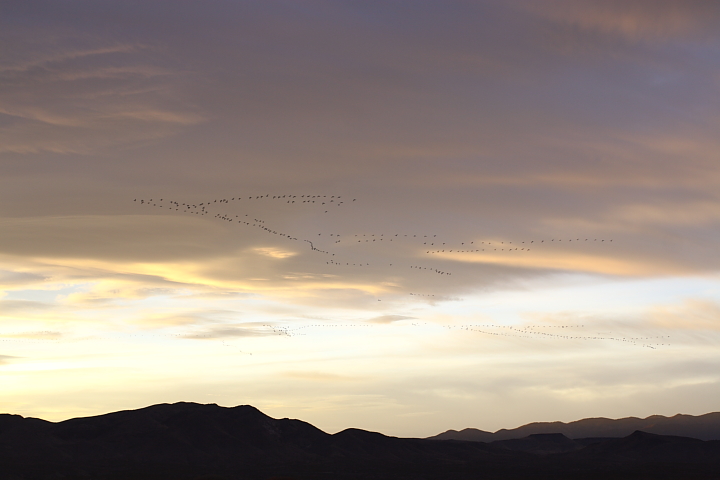in socorro, new mexico. my mother and stepfather volunteered at the refuge for a good number of years. after visiting the ghost mining town of lake valley and elephant butte state park we drove to san antonio, n.m. and then socorro. in san antonio is a road-side restaurant that is not in the best of condition, but at one time bobby flay had a 'throw-down' with the owner/chef, and one of the owner's burgers (green chile + cheeseburger) made #7 on somebodies list of best burgers across the u.s. I didn't have the chile burger, but what I had was pretty good. the volunteers from the refuge would go there just about every day for lunch. my stepfather is a hilton of very distant relation to the hotel hiltons, and since the hotel-starters' mother had had a boarding house in san antonio, he was 'known' there. (we didn't get a free lunch however 
 )
)
once upon a time, thousands of migratory birds would winter along the rio grande near socorro and san antonio. settlers arrived and made farms along the rivers, and generally got along with the birds and appreciated them. however, floods came along and destroyed farms and flood control was performed along the river, and the habitat for birds diminished very greatly. at some point, the government decided to restore some of the area to allow the birds to come back and stay at their former winter grounds, but how could this happen while still protecting the farmers from flooding? a whole network of canals, flood gates and fields bordered with shallow ***** was created so that individual fields could be flooded or drained depending on where the managers wanted the birds to be. fields were set up for growing crops like corn, and others were set up to hold shallow water so that aquatic food plants could grow and birds could eat and be protected from predators while in the water. wet fields are rotated so that the birds will move around from year-to-year, to try and keep the incidence of disease down and prevent overly slimy and muddy fields which might choke out plant life.
once wet fields and food crops like corn were available, migratory birds started returning to their former winter homes. now thousands of birds use the area for temporary and long-term stays, along with other avian and four-legged residents
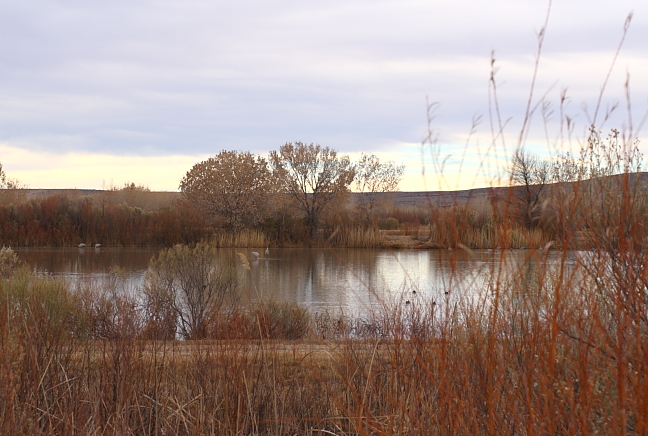
wet field with sand hill cranes and a few ducks
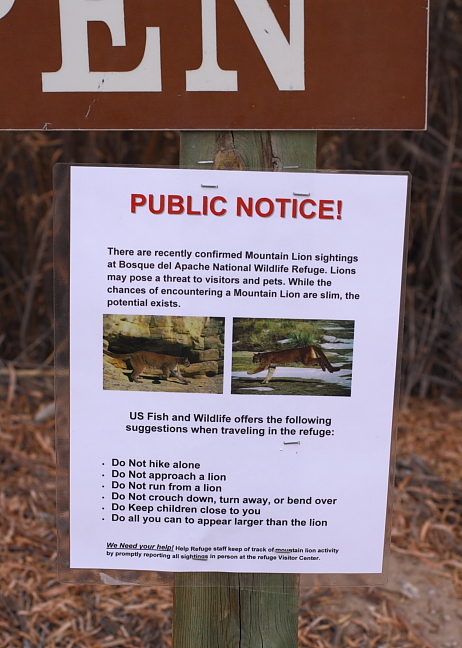
yes, they actually had darted and collared a few mountain lions, and a few had
litters of cubs. there are turkeys, mule deer and other wildlife for them to eat.
these signs were everywhere, and they are serious.. in some places people have
been killed by mountain lions so when they say act 'big', be as big as you can get!
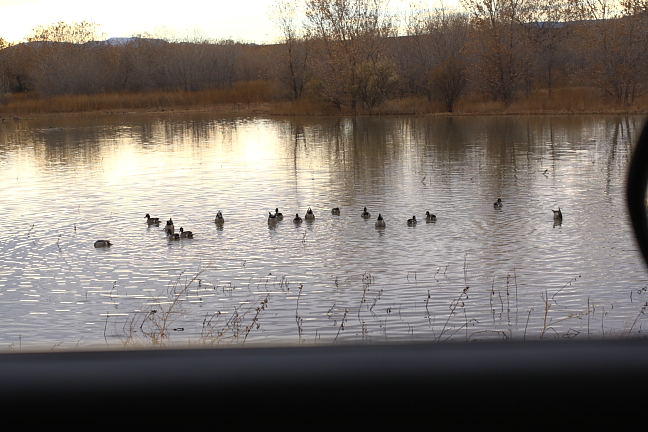
when I first saw these dabbling ducks, they all had their tails in the air which was a
little amusing! of course, by the time the car stopped and I turned on my camera
they were wondering what was up...
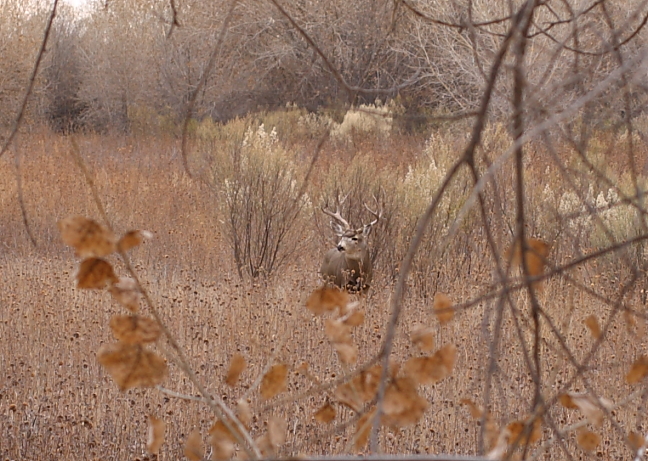
just across the road from the ducks were a few mule deer, including this very nice
buck. there is quite a bit of area for them to live in, and all the marginal areas with
trees are perfect for them. they and all animals are protected in the refuge, but if
they stray outside the boundaries they can be hunted. so, they aren't too afraid of people with cameras
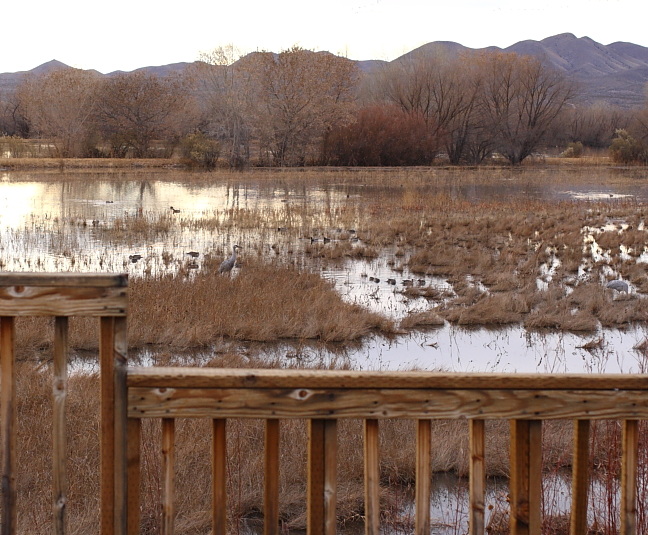
I saw these sand hill cranes fairly close to the viewing platform, so I snuck up onto it while
they weren't looking. If I had known that if people are on docks or behind fences, the
birds don't pay that much attention, I could have just strolled up. but, what would be
the fun in that?!
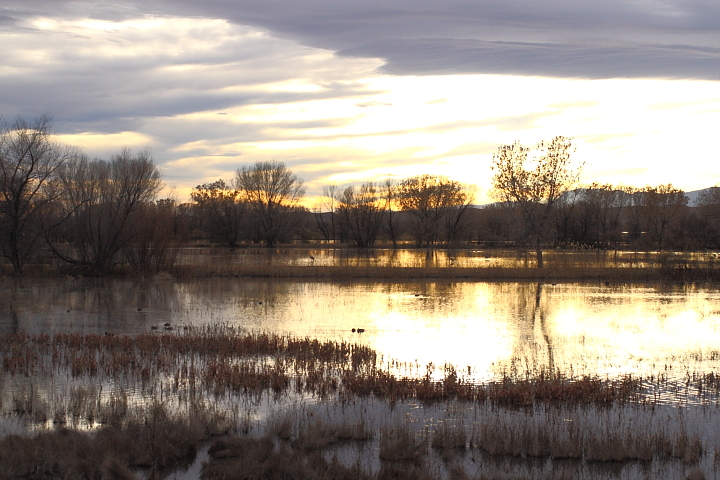
to the left of this viewing platform you could see several separated fields, with a good
number of sand hill cranes and ducks in them. each is separated by soil berms and
have flood control gates between them and the main canal so that each can be flooded
and drained at any time
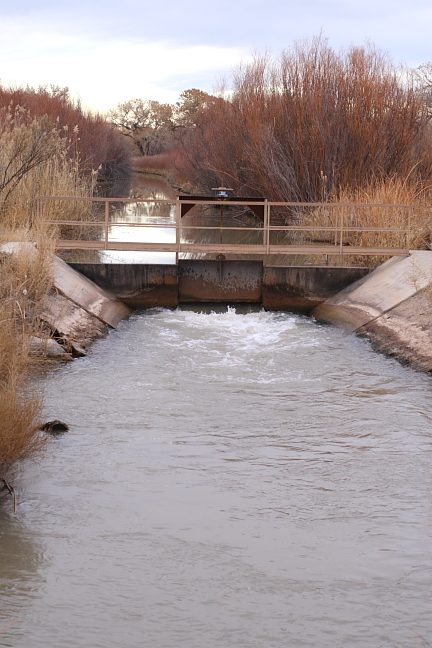
flood control gate in one of the main canals
more pics in reply thread
once upon a time, thousands of migratory birds would winter along the rio grande near socorro and san antonio. settlers arrived and made farms along the rivers, and generally got along with the birds and appreciated them. however, floods came along and destroyed farms and flood control was performed along the river, and the habitat for birds diminished very greatly. at some point, the government decided to restore some of the area to allow the birds to come back and stay at their former winter grounds, but how could this happen while still protecting the farmers from flooding? a whole network of canals, flood gates and fields bordered with shallow ***** was created so that individual fields could be flooded or drained depending on where the managers wanted the birds to be. fields were set up for growing crops like corn, and others were set up to hold shallow water so that aquatic food plants could grow and birds could eat and be protected from predators while in the water. wet fields are rotated so that the birds will move around from year-to-year, to try and keep the incidence of disease down and prevent overly slimy and muddy fields which might choke out plant life.
once wet fields and food crops like corn were available, migratory birds started returning to their former winter homes. now thousands of birds use the area for temporary and long-term stays, along with other avian and four-legged residents

wet field with sand hill cranes and a few ducks

yes, they actually had darted and collared a few mountain lions, and a few had
litters of cubs. there are turkeys, mule deer and other wildlife for them to eat.
these signs were everywhere, and they are serious.. in some places people have
been killed by mountain lions so when they say act 'big', be as big as you can get!

when I first saw these dabbling ducks, they all had their tails in the air which was a
little amusing! of course, by the time the car stopped and I turned on my camera
they were wondering what was up...

just across the road from the ducks were a few mule deer, including this very nice
buck. there is quite a bit of area for them to live in, and all the marginal areas with
trees are perfect for them. they and all animals are protected in the refuge, but if
they stray outside the boundaries they can be hunted. so, they aren't too afraid of people with cameras

I saw these sand hill cranes fairly close to the viewing platform, so I snuck up onto it while
they weren't looking. If I had known that if people are on docks or behind fences, the
birds don't pay that much attention, I could have just strolled up. but, what would be
the fun in that?!

to the left of this viewing platform you could see several separated fields, with a good
number of sand hill cranes and ducks in them. each is separated by soil berms and
have flood control gates between them and the main canal so that each can be flooded
and drained at any time

flood control gate in one of the main canals
more pics in reply thread




